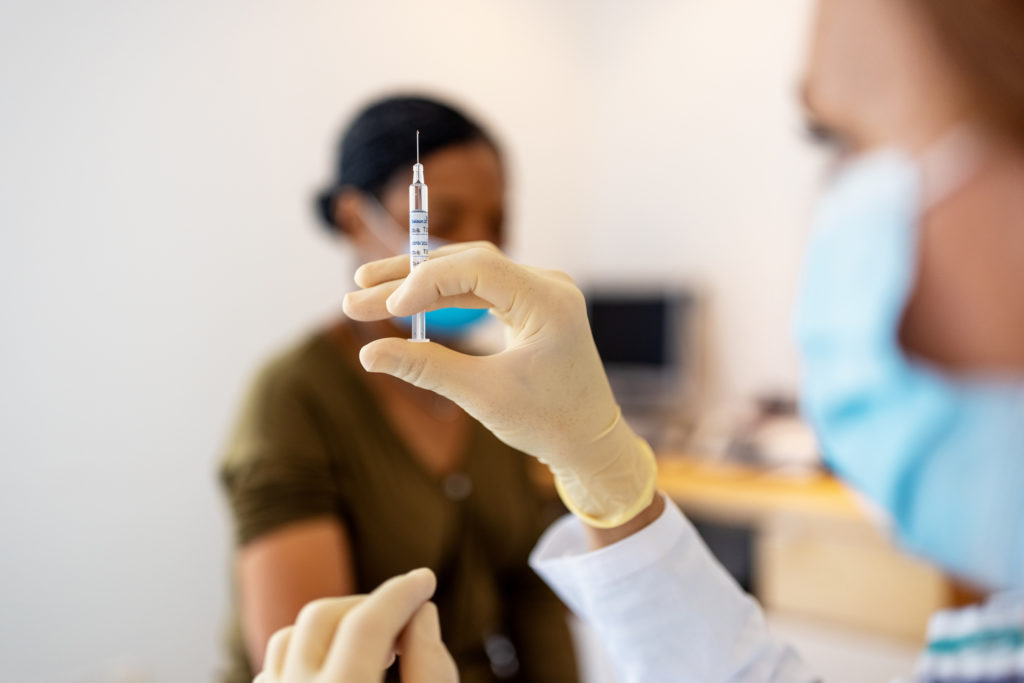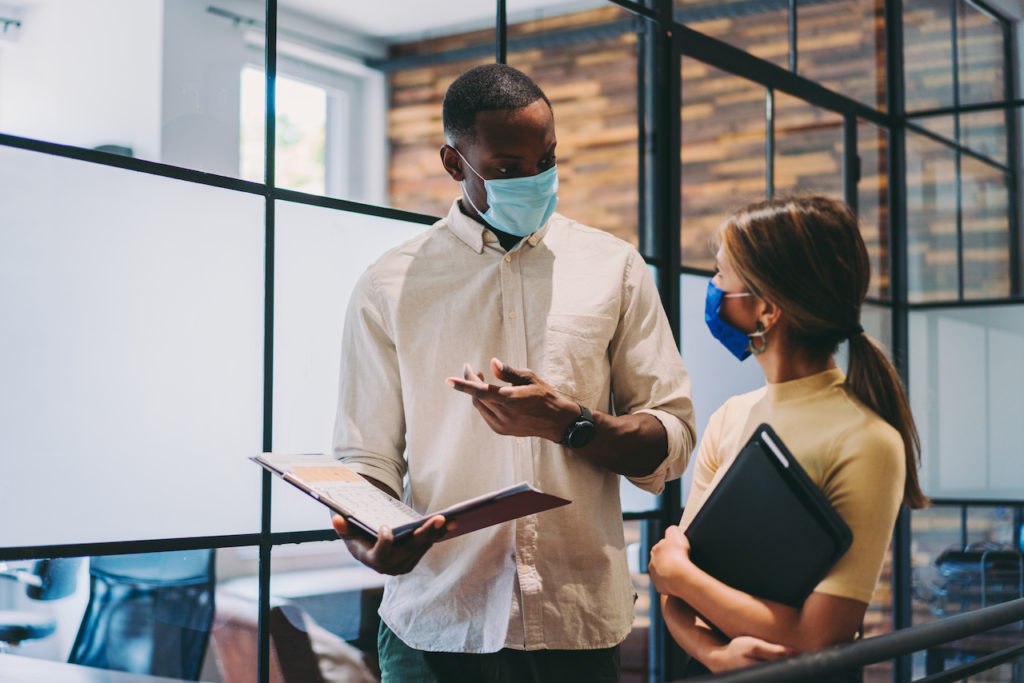Key Points:
- The pandemic damaged perceptions of the national economy, but people’s views of their own financial situation held steady.
- After the presidential election, Republicans’ views of the national economy plummeted, while Democrats’ view rose slightly.
- Local economic confidence is higher where current unemployment has been more favorable and pre-pandemic economic conditions were stronger, but not where there have been fewer COVID-19 cases and deaths.
The coronavirus pandemic and the 2020 Presidential election shook economic confidence. The pandemic hurt perceptions of national economic conditions, and the election severely dampened Republicans’ spirits while lifting Democrats’ views modestly.
But the path of economic confidence over the past year reveals surprises. People’s views of their own financial situation have changed little despite large shifts in perceptions of the national economy. Local economic confidence is higher in metros with less unemployment — but not where COVID19 infection and death rates have been lower. And urban residents are at least as upbeat about their local economies as suburban and rural residents even though the pandemic has hit big cities especially hard.
These findings are based on three Indeed surveys of American adults tracking economic confidence during the course of the pandemic. The first was conducted in late February and early March 2020, shortly before leading economic indicators started flashing red. The second was conducted in late September 2020 and the third in early February 2021, before the latest COVID relief package was passed by Congress and signed by President Biden. For comparability, we used consistent language and methodology in the three surveys.
National worries, but holding up at home
Perceptions of the national economy plummeted during the pandemic. In February 2021, only 26% of respondents described national economic conditions as “excellent or good” compared with 34% in September 2020 and 58% in March 2020. Closer to home though, things didn’t seem quite as bad. The share of respondents describing their regional economic conditions as excellent or good fell 20 percentage points from March 2020 to February 2021 versus 32 points for national conditions.
Surprisingly, people’s views of their own financial situation held steady. In February 2021, 55% of respondents characterized their own financial situation as excellent or good compared with 58% in September 2020 and 55% in March 2020. That’s striking. The pandemic began with staggering job losses. Even with widespread recovery, unemployment remains elevated and some sectors continue to lag. Emergency government support like extra unemployment insurance has offset these shocks, and rising home and stock prices have made many people wealthier.
Even more surprising is that people’s steady views of their own situation held at all education levels. In February 2021, respondents with more education rated their own financial situation more highly than those with less education — but the pattern was nearly identical to March 2020. The pandemic affected the better off and those less well off very differently, with unemployment rising more for the less educated, while those with more education could work from home. The stability of less-educated respondents’ views of their own situation may be because much of the government support was targeted to those who needed it most.
The election lowered Republicans’ confidence more than it lifted Democrats’
The pandemic caused a huge drop in national economic confidence over the past year, especially between March 2020 and September 2020. But the November 2020 Presidential election also shifted economic confidence — and that effect differed along partisan lines. Between September 2020 and February 2021, the share of Republicans describing national economic conditions as excellent or good fell from 46% to 26%, while views among Democrats improved slightly from 24% to 27%.
Key economic indicators like unemployment and payroll jobs tanked in March and April 2020, and were still much worse in September than before the pandemic. Then, between September and February 2021, unemployment fell and vaccinations began. That means Democrats’ improving views of national conditions in February 2021 tracked key economic indicators more closely than the views of Republicans did. After the election, Republicans’ confidence level dropped to where Democrats’ views were.
Longer-term optimism about the national economy also shifted after the election. The share of Democrats saying national economic conditions would be much better or somewhat better in 10 years rose to 65% in February 2021 from 58% in September 2020. However, among Republicans, the share dropped to 49% from 66% — and that’s on top of declining Republican satisfaction with current conditions over the same period.
The partisan swings in national economic confidence were much larger than shifts in views about respondents’ own financial situations. The share of Democrats describing their own financial situation as excellent or good rose two percentage points between September 2020 and February 2021 versus a seven-point drop for Republicans — a difference of nine points. Views of current national economic conditions, as shown above, improved three points among Democrats and fell 20 points among Republicans — a 23-point gap.
Regional economic confidence driven by longer-term local factors
The pandemic also shifted respondents’ confidence in their local economy — but in some unexpected ways. In February 2021, respondents were more likely to say that economic conditions in their region were excellent or good in metropolitan areas where unemployment was lower, employment grew faster before the pandemic, and more adults had a college degree.
However, local severity of the pandemic didn’t hurt local economic confidence. In fact, regional economic confidence was higher in metropolitan areas where cumulative COVID-19 infection and death rates were higher after adjusting for other local factors and individual demographics. Throughout the pandemic, the places that suffered most economically were often different from the places where the virus hit hardest.
Strikingly, in February 2021, urban respondents were as or more upbeat about current conditions and future prospects in their region as suburban and rural respondents.
Urban areas face two big challenges. First, the economy suffered more in big cities during the pandemic. Second, the growth of remote work could accelerate suburbanization and weaken downtowns. Nevertheless, urban respondents’ views of their regional economy improved more or declined less between March 2020 and February 2021 than those of suburbanites and rural residents.
Respondents were more upbeat about the prospects for their regional economy in places where employment grew faster before the pandemic and where more adults have a college degree — factors also associated with more favorable views about current regional economic conditions.
Metropolitan areas that stand out for both fast pre-pandemic job growth and high shares of college-educated residents include Austin, Raleigh, and Provo-Orem UT. And urban residents were more upbeat about their region’s prospects than suburban or rural residents.
Neither infection rates, death rates, or the latest unemployment rates had any effect on whether respondents expected their regional economy to be much better or somewhat better 10 years from now.
The pandemic shifted economic confidence in many ways. But some of the most important factors affecting economic confidence, including party affiliation and the longer-term local economic outlook, have little to do with coronavirus. They were shaped before the pandemic and will surely outlast it.
Methodology
This blog post is based on three online surveys of US adults age 18+ conducted by Indeed. The first was done from February 21 to March 6, 2020, with 2000 respondents; the second from September 21 to 28, 2020, with 4004 respondents; and the third from February 1 to 16, 2021, with 4000 respondents. Weights were applied to each survey to match respondent distributions across age, educational attainment, race/ethnicity, and sex with the 2020 Current Population Survey’s Annual Social and Economic Supplement. The same weighting scheme was applied to all three samples.
All respondents were classified as either Democrats or Republicans based on the party they identified with or, for independents and others, leaned toward.
COVID-19 case and death count data are from the New York Times. The classification of ZIP codes as urban, suburban, and rural is based on this research, with the classification available here.
All sums and differences are calculated before rounding. Thus, reported rounded sums and differences might not equal the sums and differences of reported rounded numbers. All regression results include survey weights and robust standard errors.






